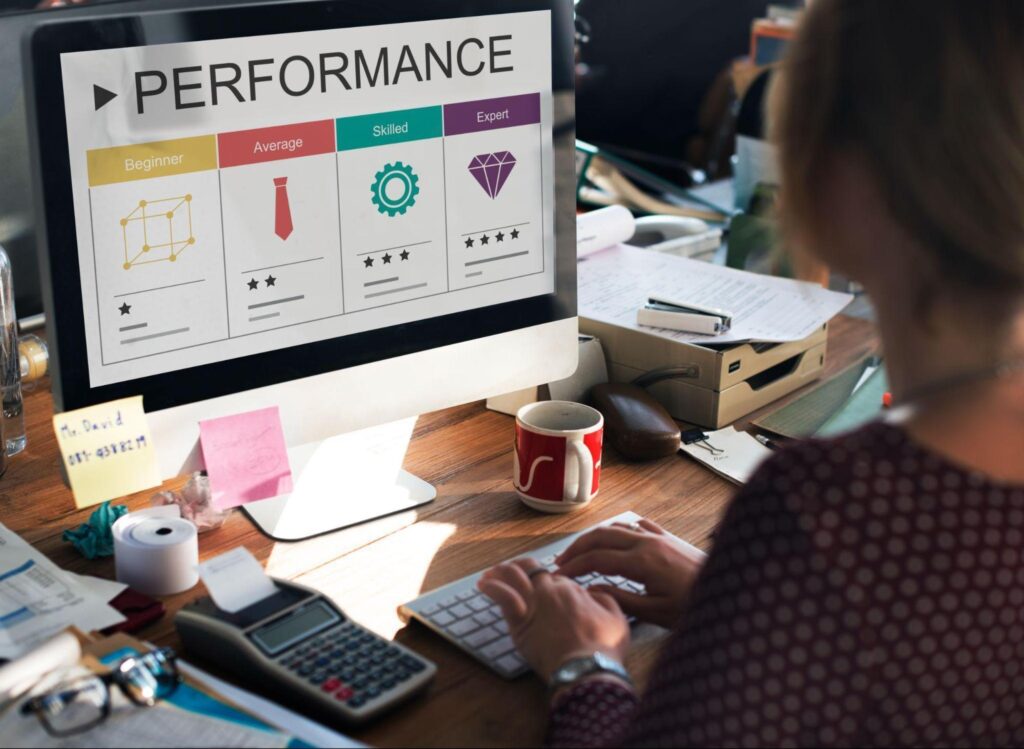The way people work has changed, so why haven’t employee performance metrics kept up?
Today’s workforce is navigating rapid change, marked by AI-driven workflows, hybrid teams, and a growing emphasis on purpose, well-being, and flexibility. Yet many organisations still rely on outdated ways of measuring success—performance metrics designed for a very different era.
This gap isn’t just a technical issue. It affects how talent is developed, recognised, and retained. When performance systems don’t reflect how value is actually created, organisations risk misjudging potential, missing key development opportunities, and weakening employee engagement.
It’s time to rethink what great performance really looks like and how to measure it in a way that drives impact now and into the future.
The Modern Workforce and Why Traditional Employment Performance Metrics Might Not Work
Workforce Characteristics and Dynamics
Workplaces today are more multigenerational than ever, and that diversity brings real challenges.
According to Korn Ferry Insights, by 2033, a third of the workforce will be over 70, while Generation Alpha (born 2010 onwards) begins entering junior roles.[1]
This wide age range means clashes in attitudes and values regarding work. Korn Ferry’s research highlights clear generational differences:
- Gen Z craves development opportunities and is strongly motivated to work for organisations with a clear social purpose.
- Millennials are in a transitional career phase, balancing career growth with milestones like buying a home and starting a family.
- Baby Boomers bring extensive experience, expertise, and institutional knowledge. While generally financially stable, they are motivated by competitive salaries and flexible working hours.[2]
But these differences aren’t just about work styles — they shape how generations see workplace challenges:
- While most Baby Boomers say they face few challenges at work, only 17% of Gen Z agree. Younger employees are calling for better communication and teamwork training to thrive in today’s fast-changing environments.
- Upskilling is unevenly distributed. Younger workers feel supported in learning new skills, but nearly half of Baby Boomers and over a third of Gen X feel left behind — a gap that risks fragmenting teams and limiting organisational potential.
These findings make one thing clear: success depends on talent strategies that don’t just accept generational diversity — they actively bridge it.
Why Traditional Employee Performance Metrics May Not Show the Full Picture
The old playbook—based on output alone—is no longer enough. KPIs like sales targets and completed projects still matter, but they rarely capture the full picture. Today’s high performers excel at navigating change, collaborating across teams, and solving complex problems. They lead with emotional intelligence. They engage others. They adapt.
These aren’t traits you can measure in a spreadsheet. But they are essential to future business success.

Useful Metrics for Evaluating Employee Performance
1. Assessments as a Key Tool for Metrics
Forget about ticking boxes. Today’s performance management is about really understanding your people—what drives them, how they think, and where they can grow.
That’s where tools like engagement surveys, 360-degree feedback, and psychometric tests come in.
Take Garner Health, for example. They flipped the script on feedback by sharing 360-degree reviews companywide. Employees pick their peer reviewers, and once all the feedback is in, everyone sees it—yes, even about senior leaders. [3]
The result? A culture of trust and accountability where honest, fearless feedback fuels real growth. Senior leaders no longer get a free pass—they get direct, constructive input that actually changes how they lead.
Why this matters: Without these honest assessments, you risk missing blind spots and failing to address real issues. People may disengage if they feel their contributions or challenges aren’t truly understood, and leadership can become disconnected from the ground realities.
2. Align Data Metrics with Organisational Goals and Values
Data alone doesn’t create impact—it must be aligned with what your organisation truly values and aims to achieve.
Microsoft’s experience during the pandemic is a perfect example. [4]
They utilised Microsoft 365 activity data and sentiment surveys not only to collect numbers but also to understand employee well-being and productivity. They discovered longer work hours, blurred work-life boundaries, and overloaded managers. At the same time, more one-on-one meetings and virtual social gatherings revealed employees’ need for connection.
From these insights, Microsoft took strategic measures: making managers’ workloads sustainable, encouraging focused 1:1 meetings to improve alignment and efficiency, and establishing protected personal time to prevent burnout.
Why this matters: Without aligning data to strategic goals, your metrics become noise—interesting but not actionable. The risk? Misguided initiatives, wasted resources, and overlooked problems that hurt both people and performance.
3. Track Growth Opportunities and Risks
What your employees are doing today is only part of the picture. To truly support and retain talent, you need to understand what they’re capable of tomorrow.
Forward-thinking organisations go beyond measuring output—they harness data to uncover growth potential, detect early signs of disengagement, and craft career paths that feel both personal and purposeful.
IBM’s use of powerful AI-driven analytics is a prime example. They leveraged advanced AI-driven analytics to track growth opportunities and identify risks, including predicting when employees might be on the verge of quitting. Key warning signs—such as clocking 15 hours of overtime a week or feeling unfairly compensated—help the company intervene early, offering targeted solutions like better pay or role adjustments to keep top talent engaged. [5]
But IBM doesn’t stop there. Their AI also analyses employee performance, skills, and development areas to guide promotions and improve efficiency. With a future-performance prediction accuracy of up to 96%, IBM—and the companies that use their tools—make smarter, data-driven talent decisions.
This proactive approach shows that tracking growth isn’t just about evaluating today’s work; it’s about managing risks and nurturing career development before challenges arise, helping organisations keep their best people motivated and productive.
And the stakes are high. In fact, Korn Ferry’s Talent Acquisition Trends report found that 67% of employees would stay in a job they didn’t love—if it provided clear opportunities to grow and upskill. [6]
Why this matters: Employee performance data used right sends a powerful message: “We see you, we value your future, and we’re invested in your journey.”
Learn Modern Approaches in Workforce Performance Management
At Korn Ferry Academy, we help organisations modernise performance management from the ground up. Our training programmes provide HR leaders and business partners the frameworks, tools, and confidence to lead in a talent-first, future-ready way. These programmes include:
- Performance Management for the Evolving Workforce: Shift from annual reviews to continuous, people-centred feedback. This work performance management programme helps you build cultures where accountability and development thrive. In this programme, leaders navigate hybrid, multigenerational teams with confidence and clarity.
- Future-Ready Talent Management: Move beyond short-term fixes to long-term workforce resilience. In this talent management programme, learn to assess capabilities, close skills gaps, and build succession pipelines that ensure agility and sustained competitive advantage.
By shifting away from a narrow, output-driven view of performance and embracing a strategic, talent-first mindset, organisations are better positioned to unlock the full potential of their people. This transformation not only enhances retention and engagement but also enables companies to build agile, high-performing teams that are well-equipped to meet tomorrow’s challenges.
- https://www.kornferry.com/insights/featured-topics/workforce-management/workforce-planning-insights#section-5
- https://www.kornferry.com/insights/featured-topics/employee-experience/best-employee-rewards-multigenerational-workforce
- https://hrexecutive.com/this-company-publishes-360-degree-feedback-is-it-working/
- https://d3.harvard.edu/platform-peopleanalytics/submission/microsoft-analyzed-data-on-its-newly-remote-workforce/
- https://www.cnbcevents.com/news/ibms-ai-backed-employee-retention-software-can-predict-when-youre-going-to-quit-with-up-to-95-accuracy/
- https://www.kornferry.com/insights/featured-topics/talent-recruitment/talent-acquisition-trends-2025
